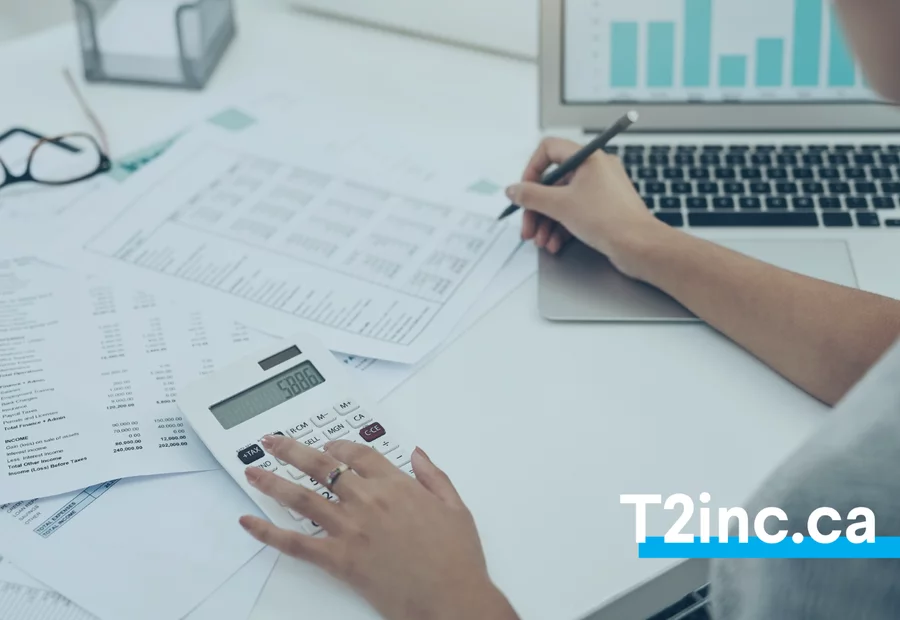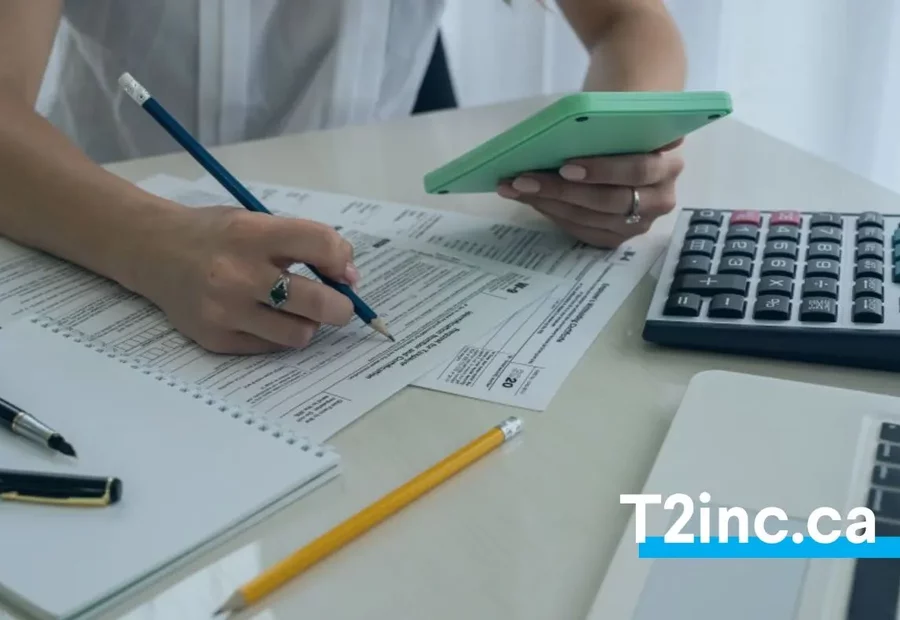Tax loss carry back or forward: How can you optimize your business tax situation?

Has your business suffered a loss? Instead of treating it as a simple deficit, you can turn it into a powerful tax lever. By using tax loss carryforwards, you can reduce your tax liability on past or future profits, improving your cash flow and optimizing your tax burden.
But not all losses are treated the same. Some are operating losses, some are capital losses, and some are specific to investments in private companies.
Understanding these losses and applying an effective loss carryforward strategy can help you maximize your tax savings and better manage your financial situation.
What is a business loss carryover?
A tax loss carryforward allows a business to use its losses to reduce taxable income by offsetting them against past or future profits. This recovers taxes previously paid or reduces future tax liability.
Under Canadian tax law, losses can be applied in two ways:
- Carry back up to three years to claim a tax refund for previous profitable years.
- Carry forward up to 20 years to offset future taxable income, reducing taxable capital gains or corporate taxes on future earnings.
Why is this important? This tax flexibility stabilizes business finances during downturns and maximizes long-term tax savings. It also optimizes the T2 tax return by ensuring all allowable losses are properly reported and leveraged.
Net capital losses
A capital loss occurs when a company sells an asset (real estate, shares, equipment, etc.) for less than its cost. This is common in investment portfolios and depreciating assets.
Unlike an operating loss, a capital loss can only be used to reduce taxable capital gains. It cannot be used against other types of income.
However, the capital loss carryback provides interesting flexibility:
- Three-year carryback: Offset the capital loss against capital gains from the previous three years to reclaim taxes paid.
- Unlimited carryforward: If you haven't had any recent capital gains, you can keep the loss to offset future capital gains for an unlimited amount of time.
Net capital loss example:
A corporation sells a building in 2024 for $250,000, originally purchased for $300,000, incurring a $50,000 capital loss, he can:
- Apply the loss to capital gains in 2021, 2022, or 2023 to recover past taxes.
- Defer the loss indefinitely to offset a future capital gain from another asset sale.
Tax Strategy: If the company anticipates a major asset sale, deferring the capital loss can maximize future tax savings rather than using it immediately.
Non-capital losses
A non-capital loss, also known as an operating loss, occurs when business expenses exceed revenue. These losses are common in business start-up, expansion phases, economic downturns, or unexpected operational costs.
The advantage? These losses can be applied to reduce corporate taxes, following two approaches:
- Three-year carryback: Apply the loss to past profits to receive a tax refund.
- Carry forward up to 20 years: Offset future taxable income, reducing tax liabilities when the company becomes profitable again.
Non-capital loss example:
If a corporation has an operating loss of $50,000 in 2024, it can:
- Carry back the loss to 2021, 2022, or 2023 to claim a tax refund.
- Carry forward the loss until 2044 to reduce future tax payments when profits increase.
Tax strategy: If the company anticipates significant growth in the coming years, it may choose to carry the loss forward for use when it generates more profits, thereby maximizing its tax savings.
Allowable Business Investment Losses (ABIL)
An allowable business investment loss (ABIL) occurs when an investor incurs a capital loss on an investment in a Canadian private small business that becomes insolvent or goes out of business. Unlike traditional capital losses, which can only be used to reduce capital gains, an ABIL can be deducted directly from taxable income, providing a broader tax benefit.
This type of loss is primarily intended for entrepreneurs and investors who take risks by financing private SMEs. In the event of business failure, the deductible business investment loss helps limit the financial impact by reducing the tax payable on other types of income.
The Canada Revenue Agency allows two types of claims for these losses:
- Immediate deduction: the loss can be applied to the current year to reduce taxable income.
- Three-year carryback and ten-year carryforward: If the loss is not fully utilized immediately, it can be applied to the previous three years to recover a portion of the taxes paid or carried forward ten years to reduce future taxes.
Example of an allowable business investment loss
An entrepreneur invests $50,000 in an innovative Canadian small business in 2022. In 2024, the company goes bankrupt, making the investment unrecoverable. He can then:
- Immediately deduct the loss from his 2024 taxable income, reducing his tax liability for that year.
- Carry the loss back three years to recoup some of the tax already paid in 2021, 2022, or 2023.
- Carry the loss forward for ten years to use against future income to reduce taxes when new profits are generated.
Tax strategy: Before investing in a privately owned SME, it's important to check whether the company qualifies for the status that allows you to benefit from an ETIP. This will ensure that in the event of a loss, you can maximize your tax deduction and reduce the financial impact of your investment.

How to maximize the use of tax loss carryforwards?
Effectively managing tax loss carryforwards optimizes corporate taxation and saves money on taxes. To make the most of them, it's important to have a strategy tailored to your financial and tax situation.
1. Choosing the right approach: carryback or carryforward?
The decision to carry back or carry forward a loss depends on your tax history and income projections:
- If your company has paid a lot of taxes in prior years, carryback allows you to get an immediate refund. It's an attractive solution for quickly replenishing your cash flow.
- If you anticipate growth and higher profits in the future, a carryforward may be more advantageous. It allows you to reduce taxes on future income, which is often subject to a higher tax rate.
2. Maintain rigorous tax documentation
To ensure that your tax losses are correctly applied and to avoid problems in the event of an audit, it is essential to:
- Keep all accounting records related to your losses (financial statements, sales contracts, bank statements, invoices, etc.).
- Attach the appropriate forms and publications to your tax return to substantiate the reported loss.
- Review your notice of assessment and, if necessary, request an assessment or reassessment to ensure that your loss has been taken into account.
3. Consult a tax professional for optimal planning
Making the most of tax loss carryforwards requires strategic analysis. An experienced tax professional can help you:
- Determine the best option between carryback and carryforward, depending on your situation.
- Optimize your tax planning to minimize long-term taxes.
- Avoid costly mistakes that could result in the loss of tax benefits.
Optimize your corporate taxes in Canada with T2inc.ca
Loss carryforwards are a powerful lever for optimizing corporate taxation. Whether capital losses, operating losses, or deductible business investment losses, strategic planning can minimize your tax burden and optimize your financial situation.
Need tax expertise to optimize your business taxes? The experts at T2inc.ca can help. Contact us today to learn more about our online services.
Contact our experts
Have a question? Need help? Fill out our online form to get help from our experts.
Contact usNeed more help?
Contact us by filling out our form
Are you interested in our services, but would like more information before taking the plunge? Contact us today and one of our tax accountants will be in touch to help you.
At T2inc.ca, we're committed to helping business owners manage their company's tax affairs so they can grow their business.




